Recreating Porsche’s most feared racer
There are few names finer in motorsport modelling than Pocher, and the brand’s latest offering is truly something special

Sponsored by Pocher
What do Lily of the Valley, Foxglove and the 1971 Le Mans 24 Hours winner all have in common? While all are unquestionably beautiful, they are also unquestionably deadly.
Porsche’s 917 wasn’t a beacon of safety at the best of times, but its 1971 challenger stands as perhaps its most radical evolution. Stunning in its classic Martini Racing livery, beneath those stripes lay a car that was literally win or (com)bust in an era when performance pushed boundaries like never before. And now you can recreate the legend thanks to this new addition to the Pocher 1:8 model kits range.
Founded in Italy over 60 years ago and now part of the Hornby Hobbies family, Pocher creates achingly beautiful and super-detailed recreations of some of history’s finest cars. The cars it focuses on all tell a story, as do the kits themselves.
“At Pocher everything is bespoke, we don’t share a spec design or tooling with other model makers, and every model we create we do from scratch, with a very high level of authenticity,” says Charlotte Gowers, Pocher’s Head of Marketing. “We spent over two years creating the tooling for [CG2] the 917 projects, because everything has to be just right.”
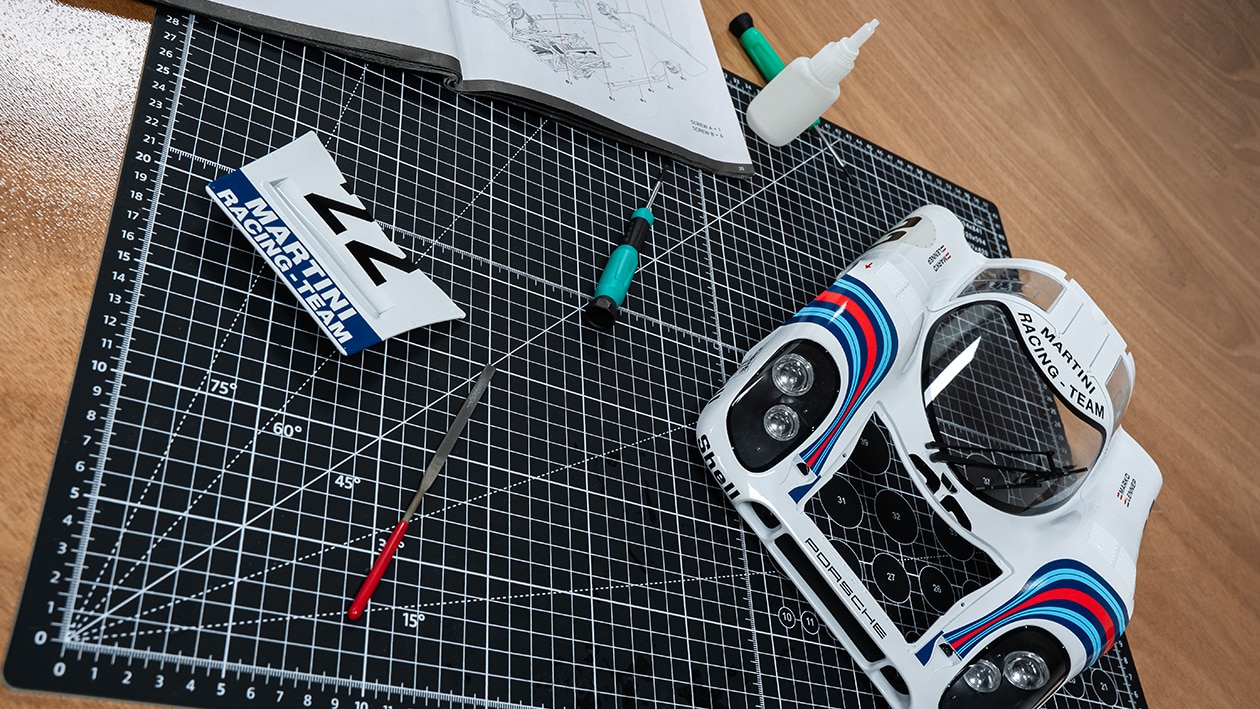
That two years in the making is time well spent, because creating a kit of this detail takes some serious research and precision.
“Accessing such an iconic and rare car can be quite challenging,” says Pocher’s Lead Engineer George Lane. “It’s not like they’re sitting in your neighbour’s garage. One difficult aspect is getting access to an engine out of the car, as a lot of detail is hidden behind body panels, frames and tubes. Capturing the intricate details and precise measurements requires extensive research and access to original drawings, photographs and expert consultations.”
Pocher uses laser scanning to great effect, particularly LiDAR, to get accurate measurements and shapes of every surface before advanced CAD software helps create the digital model. Then it’s on to the test and development phase.
“It starts with 3D modelling using CAD, and then the first prototype will be 3D-printed to evaluate shape and fit,” adds Lane. “This is then built and reviewed and refined for feedback. We will then approve the CAD and sometime later we will receive an engineering prototype which is made of the actual materials. There are several rounds of refinement and re-prototyping, typically three to five iterations. Finally, a small batch is produced and inspected for quality and consistency. This meticulous process ensures the final model is a high-fidelity representation of the original vehicle, both aesthetically and functionally.”
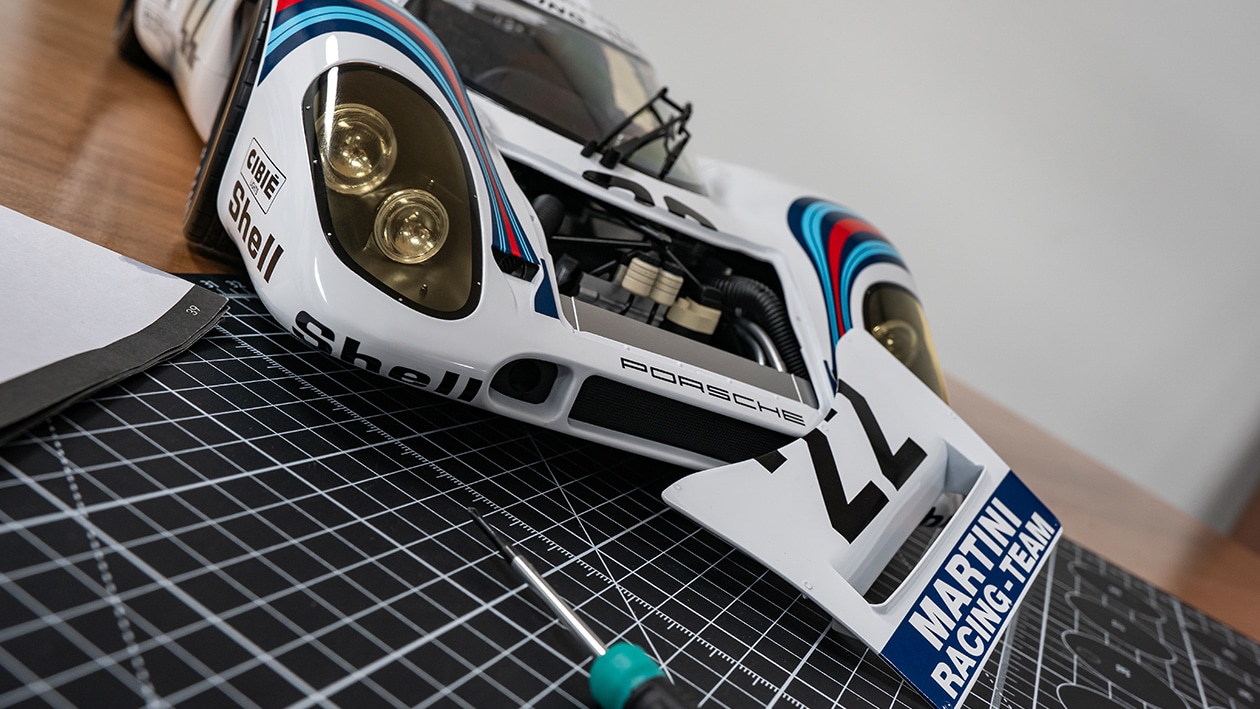
Back to the car in question. This 917, chassis 917-053, shared by Gijs van Lennep and Helmut Marko took the car already nicknamed ‘a bomb on wheels’ to a whole new level of risk when the factory decided to trim weight by swapping out its usual aluminium chassis tubes for ones made from magnesium and pressurised with gas.
Ultra-light and shedding a further 40kg over the standard cars, this construction did have the rather ominous downside of also being ultra-flammable, with a low ignition temperature and capable of burning to over 5000 degrees while being virtually impossible to extinguish (especially if you planned to douse it in water and thus set off an even more deadly chemical reaction). The magnesium chassis was coupled to a 630bhp 4.9-litre flat-12 engine, and the driver surrounded by both fuel and oil tanks, all running hot.
Fancy a go? Nah, us neither. So it was probably a good thing the team simply didn’t tell van Lennep or Marko exactly what they were driving.
Danger aside, the achievements of 917-053 were remarkable. It won by three clear laps and set a new distance record of 5,335.31km at an average speed of 222.3kph, which would stand for almost 40 years before finally being broken in 2010.
After winning Le Mans, 917-053 was instantly retired and has never been fired up since for fear of what it could do to the ageing chassis, which resides in Porsche’s museum.
Pocher’s version allows you to create your very own museum piece, featuring 316 parts that combine over a 30+ hour build time to create an intricately detailed scale replica with working suspension and steering plus opening doors and clamshell engine cover.
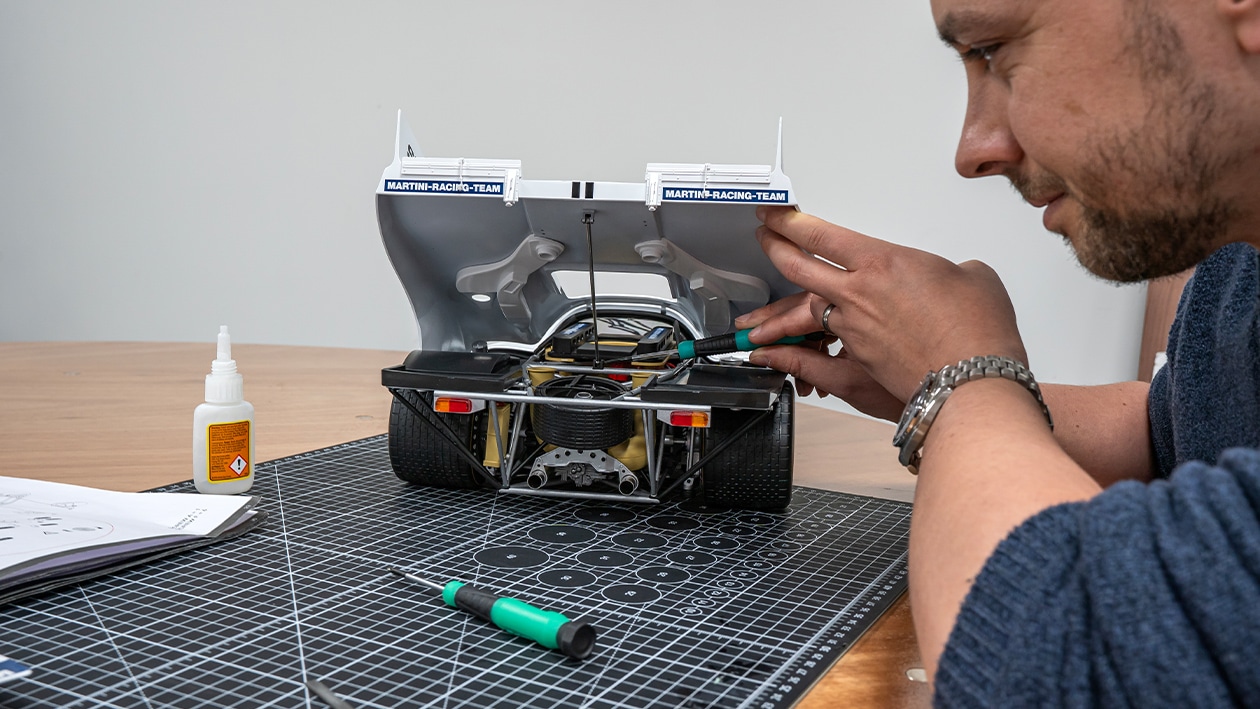
Lane says: “We use high-quality, precisely manufactured parts, which reduces the likelihood of fit issues and makes assembly smoother. The model is designed in a somewhat modular fashion, breaking down the complex structure into manageable subassemblies. This allows the builder to tackle smaller sections at a time, and means the model comes together in a similar way to the original vehicle being built, which is why the engine is a bit of a squeeze to fit in.”
There are inevitably some elements of the construction that must be adapted for practicality – but these choices are made with the builder’s experience in mind. While it would be technically possible to create tooling for every intricate, one-off piece, doing so would add significant complexity and could overshadow the enjoyment of the build.
“Sometimes we need to make considered adjustments to detail or decoration, not to cut corners, but to strike the right balance between authenticity and a satisfying, accessible build experience,” explains Lane. “We occasionally receive feedback about parts that differ from the real vehicle, or don’t replicate exact fits – and more often than not, these decisions are intentional, aimed at keeping the build enjoyable, achievable, and smooth from start to finish.”
Pocher produces mainly 1:8-scale designs, although it has done 1:4 model kits of bikes in the past. “1:8 is a great scale to work with for a number of reasons. It allows us to be differentiated and has detail, realism, functional working parts and can be more satisfying to build,” adds Gowers. “It can especially be of benefit to modellers with dexterity challenges. You can see all of the detail in the finished product, and it prevents the pieces becoming fiddly to work with.”
And of that detail. Any favourite parts? “It’s a small thing, but I like that we’ve made the cooling fan spin, the brake calipers and discs are finely detailed and I like the details we’ve put into the dashboard,” adds Lane.
And the best part, this one’s not a fire hazard…
Pocher Porsche 917KH – Martini Edition 1:8 Scale Kit
£809.99
uk.pocher.com
For more information, and to order your model kit, visit the official Pocher site.
The benefits of modelling
Model making – and hobbies in general – saw a notable resurgence during the Covid lockdowns, as people suddenly found themselves with time to fill and turned to pastimes they had previously enjoyed.
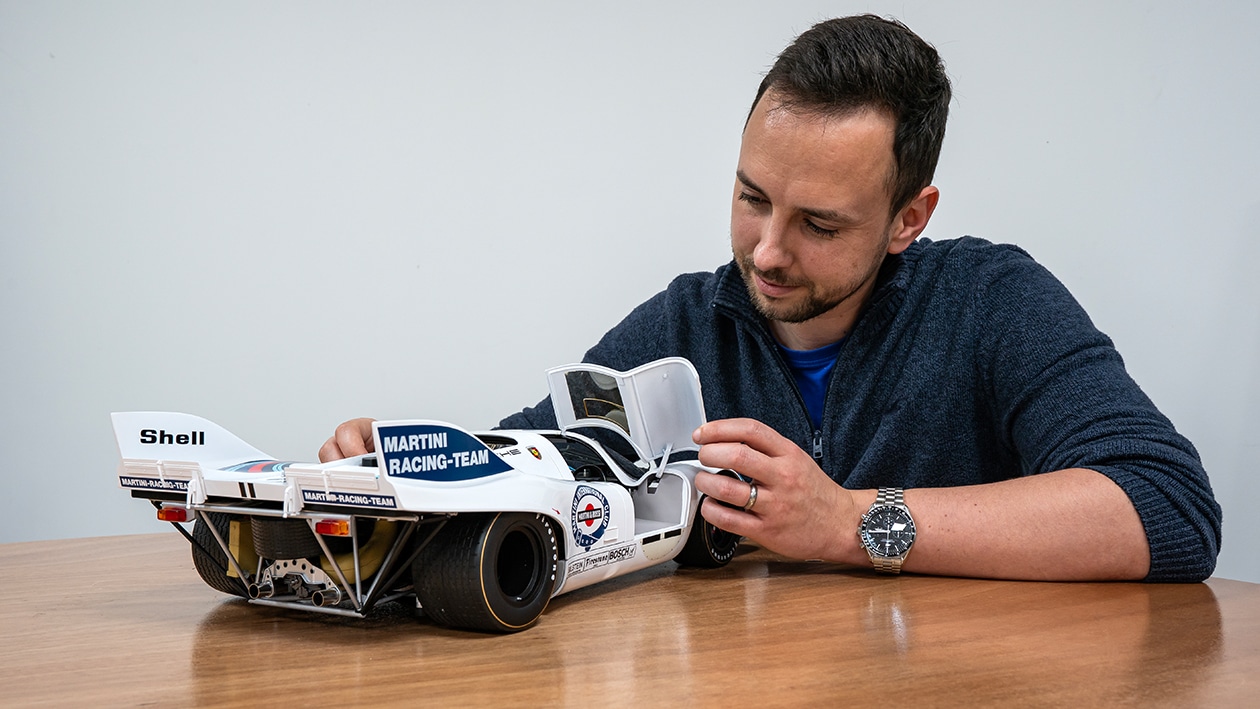
Pocher was among the brands that benefitted from this renewed interest. And while life has largely returned to normal, the benefits of engaging in a hands-on hobby remain just as relevant today.
Hornby Hobbies recently surveyed 2,000 UK adults to explore the role hobbies play in people’s lives. The results were striking: 83% of people said having a hobby makes them feel happier, and half said they took one up specifically to support their mental health. Over a third reported that their hobby helps them relax and manage stress – clear evidence of the value of switching off and focusing on something creative and rewarding. Model making stood out as a particularly appealing choice, with one in four adults saying they’re interested in trying it in the year ahead.
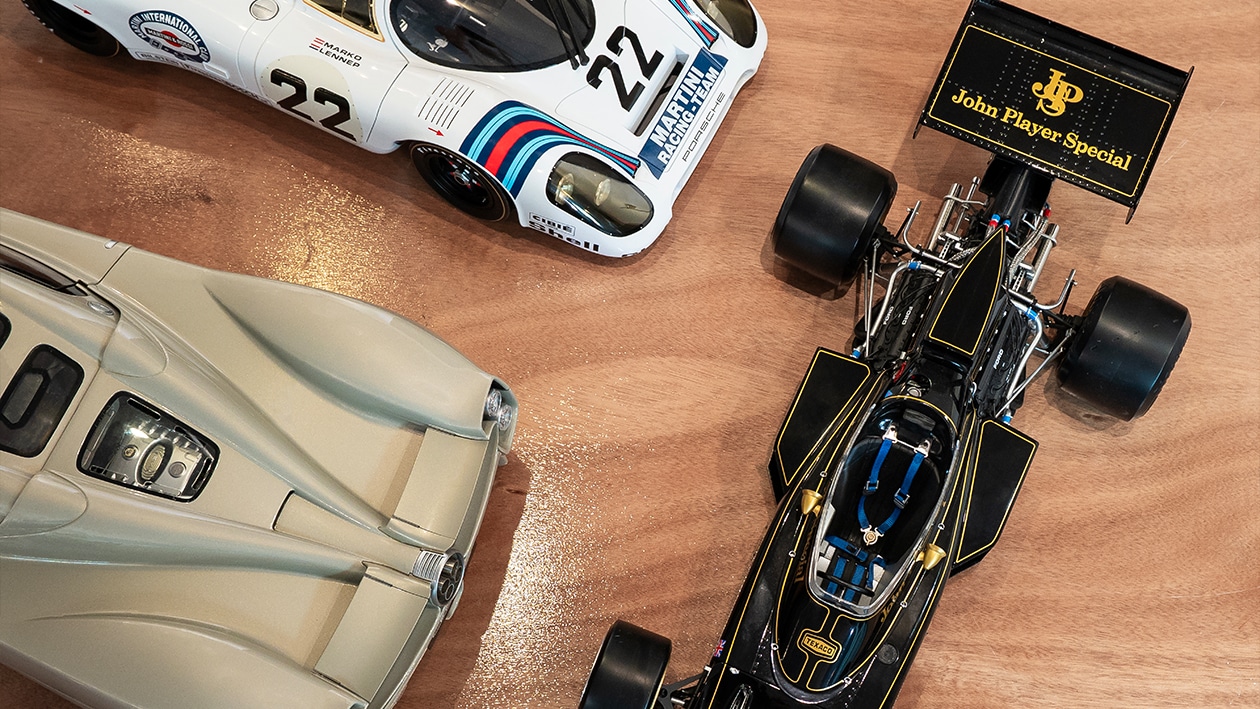
“People who have a hobby of any kind tend to be happier overall,” says Charlotte Gowers, Pocher’s Head of Marketing. “Everyone’s so busy and often overwhelmed, so being able to step away and immerse yourself in something creative becomes really important. I think Covid made that especially clear – it gave people time to reconnect with what they genuinely enjoy doing.
“We saw a big spike in interest during that period, as people picked up pastimes they hadn’t touched in years. We still hear so many stories from customers who’ve loved the process of building a kit from scratch into an authentic replica. That sense of accomplishment when it’s finished is really special.”
With a growing number of people looking to carve out time for more mindful, rewarding experiences, model making is well placed to keep inspiring both new and returning hobbyists alike.